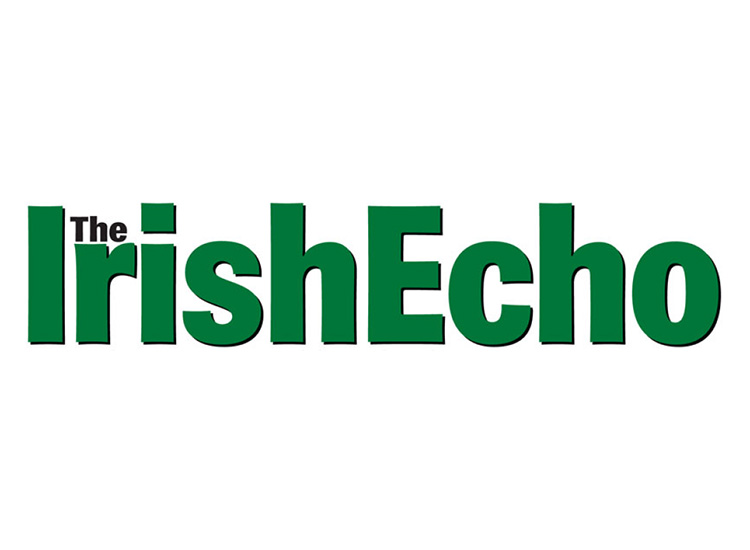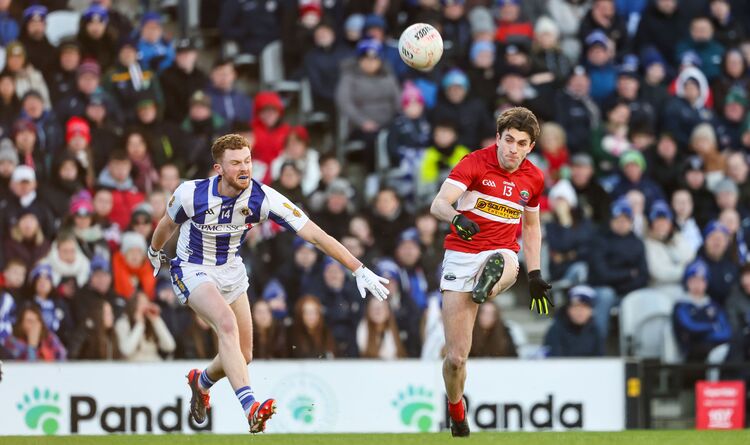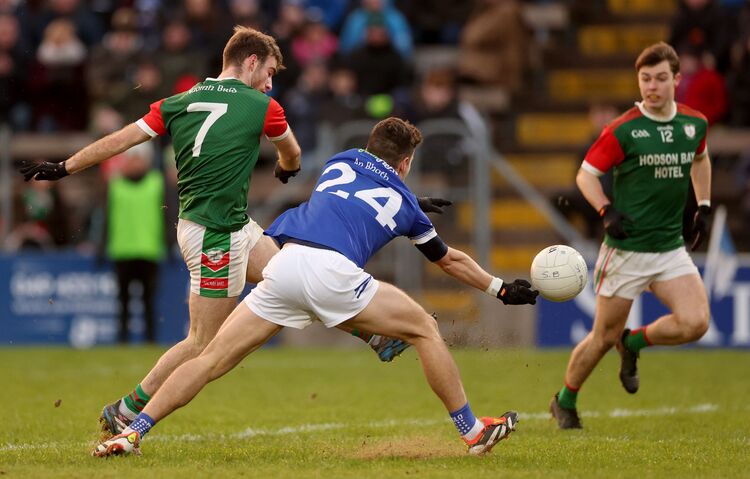By Ray O’Hanlon
rohanlon@irishecho.com
At its core, the latest argument over the New York St. Patrick’s Day Parade is about something that cannot be seen or touched, but rather imagined, sensed.
Forget parade finances, or whether or not a gay group, or gay groups, march in the parade.
The heart of the matter, the fuel for the argument that has led to an online petition with, as of today, just over 5000 signatures, concerns a fifth century man revered down the ages for rescuing the Irish from their pagan ways.
St. Patrick would doubtless be surprised at all the fuss.
Being a saint, humility would be part of his persona.
But if he was around today he would for sure find his humility tested.
That’s because when it comes to March 17, he is nothing less than a religious and cultural global superstar.
No others saint’s feast day on the liturgical calendar comes close to matching Patrick’s when it comes to name recognition, and the power to divert people, of every faith and no faith, from their daily routine.
So it’s no surprise that so many are expressing angst over the matter of St. Patrick being “in” or “out” of the New York parade, the primus inter pares of March 17 routine busters.
The argument stems from a move by parade board directors, headed by Dr. John Lahey, to remove a number of parade bylaw sections.
Sections are subsets of “articles” in the book of bylaws, essentially the parade’s constitution.
These bylaws have been tinkered with, amended, and added to over the years.
This was the case in 1993, 2000 and 2003.
But while some would look deeper into the past in search of an unbridled reverence towards the Patron Saint of Ireland and the Archdiocese of New York, it was only in recent years that the bylaws took on a distinctly religious tone, one in which the parade is joined inextricably – St. Patrick being the seal – to the Catholic Church and its New York archdiocese.
If you travel back in parade time, the centrality of St. Patrick is evident, but not nearly as spelled out as it is in the 2003 articles/bylaws of the parade, the ones that are now at the center of debate.
In the opening days of 1959, the parade was run by the New York County Board of the Ancient Order of Hibernians, headed by its legendary president, James J. Comerford, and Harry M. Hynes, a man with the title of “Chairman, Committee on Arrangements Saint Patrick’s Day Parade and Celebration Committee.”
Comerford and Hynes published a document, under the auspices of the committee, entitled the “Rules and Regulations For The Conduct Of The Parade.”
Surprisingly, given the view that people these days might have of Irish American Catholicism and religious devotion at the end of the 1950s, there is very little religion in the document, or mention of St. Patrick in a religious or diocesan context.
In a preamble, the document does deliver a history of the Ancient Order of Hibernians and its naissance in the face of outright sectarianism by nativists and know nothing bigots.
The language used in this context is, however, understated.
The document refers simply to the “aggressive actions of the American Protective Association” against Irish Catholics in New York and of Hibernian rallying to the call from Archbishop John Hughes to protect Old St. Patrick’s Cathedral.
Once the historical background is filled in, the document gets down to business. It focuses almost entirely on the nuts and bolts rules and regulations for running the annual march on Fifth Avenue.
It rolls through such dry but essential categories such as “Eligibility of Organizations” the “Affiliation Fee,” and rules for “Speaking And Voting At Meetings.”
Pages follow that lay out in precise detail how the parade should actually take place. It has headings such as “Sixteen-File Front,” “Distance Between Units,” “Leaders Not To Leave Places” and “Exhibitions And Special Drills Forbidden.”
Other headings that follow include “Parade All The Way” and “Decorum And Good Sense.”
If the document was promulgated today in the specific context of the current furor, many would be asking the same question that is being now so loudly asked: “What about St. Patrick?”
1959 was for sure a time when it was easier to assume that the parade was “in honor” of St. Patrick.
But nowhere in the parade rules of that time is this function clearly stated.
Leap forward 34 years to 2003, June 16 to be precise.
That’s the date on which the latest and still operational “By-Laws of the St. Patrick’s Day Parade, Inc.” were signed into effect by parade leaders.
It doesn’t take more than a few seconds to see that the 2003 version of the parade’s de facto constitution is far more religious in tone than its 1959 antecedent.
And it is the apparent effort by Dr. Lahey, and other board directors, to amend this language that has led to uproar and the petition.
A late October meeting, ultimately cancelled and as yet not rescheduled, was intended to consider the removal of sections of the bylaws that have been in force since 2003.
They include Article 2, Section 2 which states: “Members of the Board of Directors shall be Roman Catholic of Irish descent and certify that they are active members of their respective parishes, and be members of the Ancient Order of Hibernians, New York County, or Ladies Ancient Order of Hibernians, New York County and be practicing Catholics as required for membership in the Ancient Order of Hibernians and Ladies ancient Order of Hibernians. They should also be interested in upholding the values and traditions of the New York St. Patrick’s Day parade.”
Also slated for removal were six sections under Article 3. Article 4 of Section 3 reads much like Article 2, Section 2. But it is articles 5 and 6 and their proposed deletion that have mostly fired up the current rancor and argument.
The six articles state: Section 1: “There shall be a standing committee entitled, The St. Patrick’s Day Parade and Celebration Committee.
Section 2: “The Officers of the St. Patrick’s Day Parade and Celebration Committee shall be: Chairman, Vice Chairman, Executive Secretary, Recording Secretary, Treasurer, Financial Secretary, Correspondence Secretary and Sergeant-At-Arms.
Section 3: “The Officers of the St. Patrick’s Day Parade and Celebration Committee shall be elected by the Delegates from the affiliated units of the previous year’s parade, with the exception of the Executive Secretary who is elected by the Board of Directors.
Section 4: “Eligibility for Office in the St. Patrick’s Day Parade and Celebration Committee: Initially he or she must be Roman Catholic of Irish descent and certify that they are active members of their respective parishes, and be members of the Ancient Order of Hibernians, New York County, or Ladies Ancient Order of Hibernians, New York County; and be practicing Catholics as required for membership in the Ancient Order of Hibernians and Ladies Ancient Order of Hibernians. They should also be interested in upholding the values and traditions of the New York St. Patrick’s Day Parade.
Section 5: “The St. Patrick’s Day Parade and Celebration Committee shall organize and conduct the annual St. Patrick’s Day Parade in the City of New York as a tribute to the Patron Saint of Ireland and the Patron Saint of the Archdiocese of New York.
Section 6: “The Parade will be held in honor of St. Patrick, the Patron Saint of the Archdiocese of New York and the Patron Saint of Ireland. An invitation shall be extended to all organizations, who are members of the Parade Committee to participate in our annual tribute to St. Patrick, to attend the Parade and march in the Parade provided that each marching unit is approved in advance by the Credentials Committee of the St. Patrick’s Day Parade and Celebration Committee.”
Not all the current language focused specifically on St. Patrick is on the chopping block.
Article 1, Section 1 is to remain unchanged. It states: “The purpose for which the corporation is formed shall be to organize and conduct a parade along Fifth avenue in the City of New York on March 17 of each year to honor Saint Patrick, the patron saint of Ireland and of the Archdiocese of New York, and to apply for an hold any permit, license, authorization or any other certification as may be necessary or convenient to the foregoing purpose.”
Also outside the deletion list is Article 3, Section 7. It states: “No unit which has a political or social agenda or message to deliver or which has a commercial message or which espouses principles or agendas which are inconsistent with the teachings of the Roman Catholic Church or which seeks to demean or disparage the Irish, the memory of St. Patrick or the Roman Catholic Church, shall be permitted to march in the St. Patrick’s Day Parade.”
The reasons for changing the by-laws in recent years, and infusing them with language that seems intent on bolstering the religious aspect of the parade, are not difficult for anyone familiar with recent parade history to discern.
Parade leaders over the last 25 years have felt under siege, not just from Irish gay groups and their supporters wanting to participate, but from a full flow of forces swirling around what are generally known as the “culture wars.”
For most of the last two-and-half decades, it has been, for parade leaders, mostly a case of battening down the hatches.
Only in most recent years has that action started to go into a reverse.
In recent months that, the reversal has accelerated.
Now it has hit a wall.
Change, when it concerns something that people hold close to their hearts, is always unsettling.








